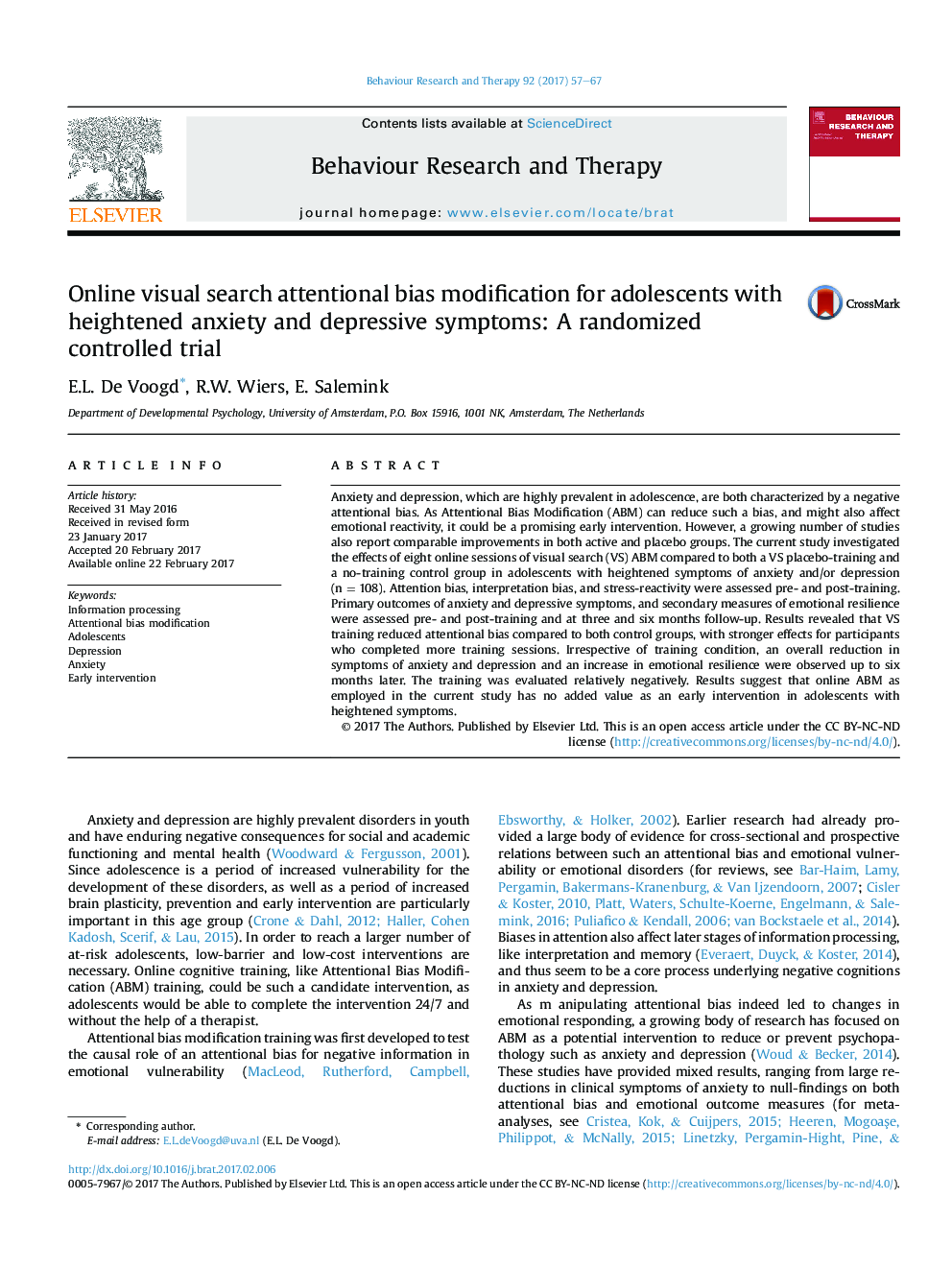| Article ID | Journal | Published Year | Pages | File Type |
|---|---|---|---|---|
| 5038291 | Behaviour Research and Therapy | 2017 | 11 Pages |
â¢A study on short- and long-term effects of online attentional bias modification.â¢Participants were adolescents with heightened anxiety and/or depressive symptoms.â¢Visual search training was compared to placebo and no-training control groups.â¢Visual search training reduced negative attentional bias.â¢Improvements in symptoms and resilience were found irrespective of condition.
Anxiety and depression, which are highly prevalent in adolescence, are both characterized by a negative attentional bias. As Attentional Bias Modification (ABM) can reduce such a bias, and might also affect emotional reactivity, it could be a promising early intervention. However, a growing number of studies also report comparable improvements in both active and placebo groups. The current study investigated the effects of eight online sessions of visual search (VS) ABM compared to both a VS placebo-training and a no-training control group in adolescents with heightened symptoms of anxiety and/or depression (n = 108). Attention bias, interpretation bias, and stress-reactivity were assessed pre- and post-training. Primary outcomes of anxiety and depressive symptoms, and secondary measures of emotional resilience were assessed pre- and post-training and at three and six months follow-up. Results revealed that VS training reduced attentional bias compared to both control groups, with stronger effects for participants who completed more training sessions. Irrespective of training condition, an overall reduction in symptoms of anxiety and depression and an increase in emotional resilience were observed up to six months later. The training was evaluated relatively negatively. Results suggest that online ABM as employed in the current study has no added value as an early intervention in adolescents with heightened symptoms.
